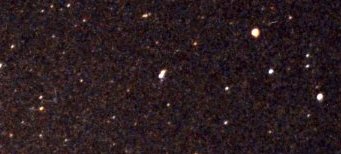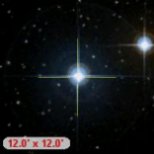

 |
 |
At far left, the image of Zeta Corvi (center) is partially blended with that of HR 4691 seven minutes of arc away. Minkar (Epsilon Corvi) lies well up and to the right, while Alchiba (Alpha Crv) is near the right hand edge. At near left is a telescopic view of fifth magnitude Zeta and sixth magnitude 4691 showing them well separated. Are they related? (Near left picture from SIMBAD.) |